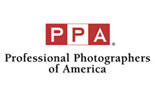A fellow photographer friends of mine posted this and invited me to share it with my clients as well! Thanks Cristy & Yolanda!
Why Are Professional Photographs Watermarked?
(by Cristy Nielsen & Yolanda Rowe)
As parents, we do everything we can to protect our children. We teach them to look both ways before crossing the street and many other ways to be safe. Photographers have the same responsibility to their work. Each photograph is important–not just because they are our livelihood but because they are portraits of special people: our clients. To protect our work and our clients, we watermark every image that appears online. We hope to discourage unethical people who steal from photographers by copying and using images for their purposes without authorization or compensating the copyright owner and subjects.
For example, let’s say your photographer posts preview images on a social networking site such as Facebook or Myspace. These photos are intended to show the client a preview of what their session images will look like. If they are not watermarked they cannot be identified back to the photographer who created the image and they could be stolen by a third party and used without permission. This has happened on numerous occasions by companies who will use photographs for their marketing campaigns and then photographers or their clients have found their images and photos on the sides of buses, on billboards, etc. Imagine finding a photo of you or your child on a flyer or website for some random company when you didn’t give permission for it to be used in that way and you will begin to understand why photographers watermark to protect their work.
Federal law is very clear on the copyright of images. The creator of the image (the photographer) is the owner of those rights. A client pays the photographer to take those images, but it does not give them ownership (rights) to what is created. Even if the client purchases a file or print it does not give the client copyright to the image. They are given a license to do certain things. This is called a Usage License and it is illegal to scan or copy it and use it in any way other than which it was intended: displaying the print itself. Even purchasing prints does not give the client copyright to the image and it is illegal to alter, scan, or copy it and use it in a way other than its intent. Copyright is held by the image creator for 70 years by law and infringement is punishable by up to $150,000 in fines PER image.
While it may seem like no big deal to make additional copies of an image, or crop out watermarks in web versions of photos, truly it is a big deal. A photographer works very hard on their images, and this is their livelihood, source of income and how they feed their family. When you copy and scan images you are taking part of the income that they depend on to stay in business and serve their clients in the first place. Watermarking is a necessary evil to protect photographers, to protect their work and their job security. As Yolanda says “Copyright is like your vehicle. You can give someone the keys to drive it (granting permission to a client) but it doesn’t make them the owner of the vehicle.”
For more information on copyright please visit http://simple.wikipedia.org/wiki/Copyright
Example of a stolen image that was used commercially without consent: http://www.pdnpulse.com/2009/06/how-did-this-familys-facebook-picture-end-up-on-a-czech-poster.html










